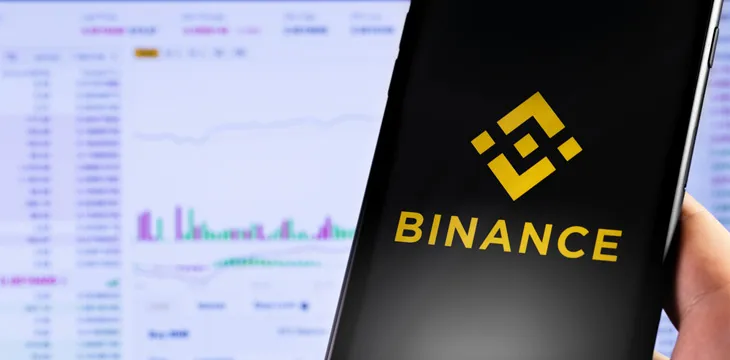|
Getting your Trinity Audio player ready...
|
The Binance digital asset exchange has some explaining to do after blockchain data showed it financially rescuing its supposedly ‘independent’ Binance.US offshoot.
Monday morning saw bankrupt digital asset lender Voyager Digital announce that it had accepted a $1.02 billion bid from BAM Trading Services (aka Binance.US) for Voyager’s remaining assets. Binance.US plans to return assets still on the Voyager platform to customers “in kind, in accordance with court-approved disbursements and platform capabilities.”
The bid represents the current market price of Voyager’s remaining digital assets plus $20 million of “incremental value.” Binance.US has agreed to make a $10 million “good faith deposit” and will reimburse Voyager for up to $15 million in “certain expenses.”
In a blog post, Binance.US CEO Brian Shroder stated that Voyager customers will be able to claim their digital assets “on the Binance.US platform,” which will obviously require opening a new Binance.US account for those that weren’t already on the platform.
Voyager plans to ask its bankruptcy overlords for permission to move the deal forward, after which Voyager creditors will vote on whether they want the deal to proceed. The deal has a deadline of April 18, 2023, with a possible one-month extension. If not closed in time, Voyager will aim to return its remaining assets directly to its 100,000+ creditors.
Voyager went belly-up in July following the collapse of the Three Arrows Capital (3AC) ‘crypto’ hedge fund, which itself was sparked by the collapse of Terraform Labs’ algorithmic stablecoin. At the time of its implosion, 3AC reportedly owed Voyager around $650 million, funds that Voyager is still trying to claw back.
Voyager’s remaining assets were originally won at auction by FTX US, the U.S. offshoot of the Bahamas-based FTX exchange. But November’s bankruptcy of the FTX empire rendered that deal dead as a doornail, prompting Voyager to take a second look at Binance.US, the original auction’s runner-up.
Who’s rescuing whom?
When FTX.US won that auction, it was only six weeks from filing for bankruptcy. We now know that FTX’s CEO/owner Sam Bankman-Fried (SBF) was buying up distressed companies in the hopes of gaining access to their remaining assets, which SBF believed would sustain his Ponzi scheme a little longer while he searched for a more permanent solution to FTX’s problems.
Binance is currently dealing with its own insolvency rumors, leading to a record volume of withdrawals last week. The timing of these rumors is sparking concerns that Binance might be seeking to acquire Voyager for the same self-interested reasons that led FTX to win that initial auction.
To quiet the insolvency chatter, Binance boss Changpeng ‘CZ’ Zhao deployed his standard toolkit, including tweeting dismissively about ‘FUD’ (fear, uncertainty and doubt), unleashing his bot army on negative tweets and going on CNBC to reassure both customers and investors that all was well. Except the CNBC appearance didn’t go according to plan.
Pressed by Squawk Box hosts as to Binance’s true financial state, CZ insisted “we’re financially okay.” Pressed further on whether Binance could withstand a demand from FTX’s creditors to claw back the $2.1 billion Binance received from the 2021 buyout of its 20% stake in FTX, CZ downshifted his guarantee to: “We’ll let the lawyers handle it.” This response prompted an epic eyeroll from frustrated host Becky Quick.
Alright guys, time to put a countdown timer on the collapse of Binance.
CZ just completely bombed an interview, be sure to watch this whole clip. pic.twitter.com/hchP5aZkYu
— Bitfinex'ed 🔥🐧 Κασσάνδρα 🏺 (@Bitfinexed) December 15, 2022
And if CZ was looking to calm the waters by illustrating that, unlike FTX and its shoddy accounting practices, Binance was watching every penny, well… CZ told Squawk Box that until the day he publicly threatened to dump the $580 million in FTT that Binance still held from that FTX buyout, “we actually kinda forgot about it.”
My right hand hasn’t seen my left hand in 30 years
While the solvency speculation is focused on Binance.com, Binance.US CEO Shroder took to Twitter Monday to emphasize that Binance.US “is well capitalized: our assets exceed our liabilities. All of our customers could withdraw their assets tomorrow, which is their right & we would still have hundreds of millions of current assets.”
Perhaps, but neither Shroder nor CZ have so far offered any refutation of reports this weekend that Binance.US received a $10 million transfer of Tether (USDT) from an unidentified digital address, which itself had been fed by wallets associated with Binance.com.
USDT withdrawals seemed to have restarted again, after an injection of 9M USDT from https://t.co/G8E1EiAsBG pic.twitter.com/pMYRRm82lS
— Conor (@jconorgrogan) December 17, 2022
The transfer followed a period in which Binance.US had ‘paused’ withdrawals of USDT, citing a ‘Wallet Upgrade issue.’ However, the real problem appears to have been a lack of sufficient USDT on the exchange to meet customers’ withdrawal requests. Following this $10 million transfer from the Binance.com wallets, USDT withdrawals swiftly resumed.
Further digging by the ever-enterprising Dirty Bubble Media exposed evidence that the address in the middle of these transfers appeared to do nothing but transit funds to Binance.US from Binance.com wallets. The total sum transferred via this payment ‘rail’ since July 2020 is around $1.4 billion. A second address was found to be facilitating the flow of over $1.9 billion in the opposite direction, from Binance.US back to Binance.com wallets.
https://twitter.com/MikeBurgersburg/status/1604431139430711300
This activity could explain the disparity between the total value of the assets held by Binance.US wallets being less than half the trading volume that regularly occurs on the cryptocurrency exchange. In other words, the majority of Binance.US trades may actually be occurring on Binance.com, which would mean Binance.US funds are being commingled with those of Binance.com customers.
Binance.US’s terms of service confirm that it utilizes the services of market makers “including Related Parties” and entities “operating outside of the United States” to ensure adequate liquidity on the exchange.
In a Twitter Spaces ‘Ask Me Anything’ event last week, CZ confirmed that he’s a major shareholder in a market maker that does business on Binance (but “does not make profits”). Suspicion is rife that these two in/out wallet addresses are the market maker to which CZ referred.
Never mind that BAM Trading is owned by CZ and that Reuters has obtained documents indicating how CZ calls the shots for Binance.US from abroad. If accurate, these wallet revelations conclusively expose the lie behind CZ’s claims that Binance.US is a ‘fully independent entity’ to which Binance.com merely licenses its technology and its brand.
Changpeng Zhao (CZ) said that Binance US is completely separate from Binance, and that it only licenses the technology from Binance.
Once again, that has been proven to been another lie.
Here's Binance US's corporate organization. pic.twitter.com/yFT9yYKvJq
— Bitfinex'ed 🔥🐧 Κασσάνδρα 🏺 (@Bitfinexed) December 18, 2022
RICO, not so suave
The U.S. Department of Justice was already preparing to file charges against Binance, including unlicensed money transmission, money laundering conspiracy, and criminal sanctions violations. With fresh evidence that the alleged separation between Binance and Binance.US was always a work of fiction, the DoJ may accelerate its plans to drop a major lump of coal in CZ’s Christmas stocking.
The DoJ seems well prepared to employ the vast latitude afforded them by the U.S. Racketeer Influenced and Corrupt Organizations (RICO) Act. Binance’s global patterns of conspiratorial behavior would seem all the evidence the feds need to drop the RICO hammer, not just on CZ but all Binance enablers across the globe. Class action suits also seem likely, as there will be no shortage of financially ruined victims when the fraudulent dust finally settles.
As we’ve seen with FTX, when the reality of lengthy prison stints becomes more than an abstraction for company insiders, there’s typically no shortage of rats willing to dish the dirt on their former partners in crime. Court filings have now revealed that, two days before FTX filed for bankruptcy, co-CEO Ryan Salame alerted the Bahamas Securities Commission that FTX was illegally transferring customer deposits to its (SBF-owned) market-maker Alameda Research.
The DoJ is likely seeking to speak with two former CEOs of Binance.US, Catherine Coley and Brian Brooks. Coley hasn’t been heard from since she resigned in early 2021 while Brooks bailed after less than four months, apparently after he realized CZ’s initial assurances that Brooks would have a free hand in the U.S. exchange’s operations were lies.
BeaNie Babies
The knowledge that CZ has his fingers in a market maker that’s actively moving funds between Binance.com and Binance.US will only serve to emphasize the similarities in the modus operandi of both CZ and SBF.
FTX was already a dead man walking when a leaked balance sheet showed Alameda’s unhealthy reliance on FTX’s printed-out-of-thin-air FTT token, the vast bulk of which was under SBF’s control. But Binance has its own issues with proprietary pet rocks.
— Mike Alfred (@mikealfred) December 9, 2022
The single largest allocation of tokens on Binance was recently revealed to be its own in-house token BNB at 28% of the total, while Binance’s stablecoin BUSD accounted for 26.5%. Binance lends its brand name to a Paxos-issued, U.S.-regulated version of BUSD, but Binance also mints its own BUSD tokens that have no oversight whatsoever and the existence of tangible assets backing the Binance-minted BUSD remains an open question.
The equally problematic Tether stablecoin represents 16.75% of Binance’s tokens, leaving a mere 28.7% in BTC, ETH and other tokens—only slightly more than Binance’s stash of BNB. Honestly, if Binance customers can view these percentages and not stampede towards the withdrawal exits, then perhaps they get what they deserve.
And now, the end is near…
CZ originally thought to differentiate his firm from FTX by publicizing a threadbare ‘proof of reserves’ report that he disingenuously described as an ‘audit.’ Honestly, it was as if CZ had received a letter from his mother in which she called him a ‘catch,’ after which he claimed People magazine had named him the Sexiest Man Alive.
Late last week, French firm Mazars scrubbed the Binance report from its website and announced that it was cutting its crypto clients loose “due to concerns regarding the way these reports are understood by the public.” Mazars stressed again that these reports “do not constitute either an assurance or an audit opinion on subject matter. Instead they report limited findings based on the agreed procedures performed on the subject matter at a historical point in time.”
In a further example of the lengths CZ will go to conceal the truth behind Binance’s operations, Reuters reported that Wei Zhou, Binance’s former Chief Financial Officer who left the company in June 2021, “did not have access to the company’s full accounts during his three-year tenure.”
Reuters also detailed the opacity of the operations at Binance’s local subsidiaries, some of which are improbably based out of co-working spaces or apartment blocks. Some of these local partners expressed ignorance of how Binance.com conducts its affairs. Reuters also reported on local regulators lacking any real insight into how these regional offshoots connect with the main Binance.com operation.
John Reed Stark, former chief of the U.S. Securities and Exchange Commission’s Office of Internet Enforcement, told Reuters that Binance are “co-opting the nomenclature of regulation to create a veneer of legitimacy. There is absolutely no transparency, no sunlight, no confirmation of any kind about its financial position.”
Belatedly sensing which way the wind is blowing, Jo Johnson, the brother of former UK Prime Minister Boris Johnson, resigned his position as a Binance advisor last week. Johnson was brought on to help Binance find a legal way to enter the UK market after all the backdoor entry attempts were identified and rejected but evidently felt the cost to his reputation too high. (Binanxit?)
Upper-class twits of the year aside, mainstream media has clearly learned a lesson after being burnt by their historical fawning over SBF, but scrutiny of Binance needs to be further intensified if the whole truth is ever to emerge. It’s probably too late to avert the coming carnage but perhaps some customers could be encouraged to drop their rose-colored glasses and smash that ‘withdraw’ button already.
Follow CoinGeek’s Crypto Crime Cartel series, which delves into the stream of groups—from BitMEX to Binance, Bitcoin.com, Blockstream, ShapeShift, Coinbase, Ripple,
Ethereum, FTX and Tether—who have co-opted the digital asset revolution and turned the industry into a minefield for naïve (and even experienced) players in the market.

 05-01-2025
05-01-2025 





